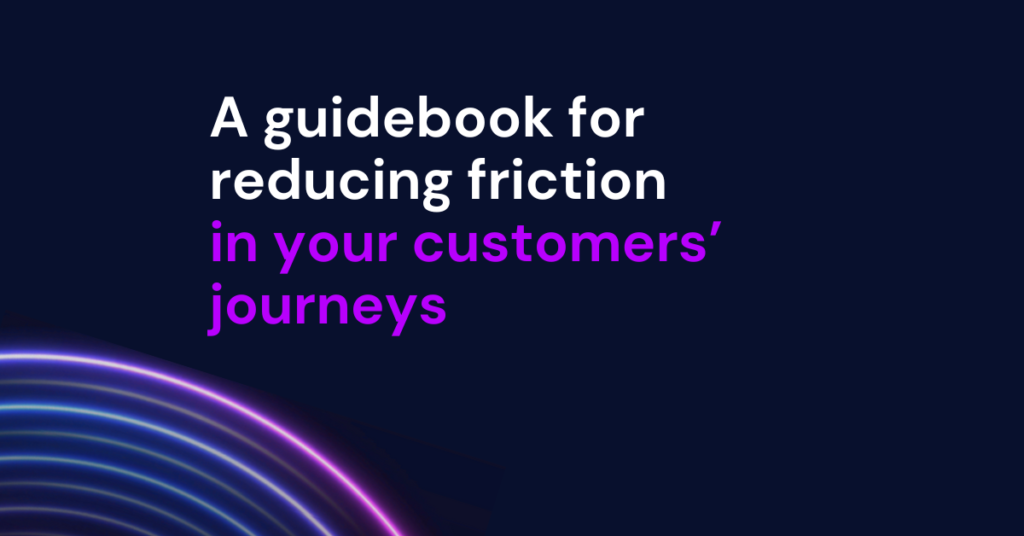Defining true UX: Harnessing deep user research for strategic impact
The current cutthroat digital jungle businesses operate in makes user experience (UX) key to survival. From the moment users interact with a product or service, their experience shapes their perception, satisfaction, and loyalty. On top of that, with a plethora of choices, users often won’t waste even a second trying to battle with a brand’s poor UX.
However, not all UX is created equal. Surface-level UX, focusing solely on aesthetics and usability, often falls short of truly understanding user needs and desires. This surface-level approach won’t cut it anymore for businesses. If you want UX that creates impact for the bottom line, it’s imperative to dive into the deeper level of UX and start harnessing the power of deep user research.
What is true user experience?
At its core, UX encompasses the entirety of a user’s interaction with a brand and its product, service and systems, including usability, accessibility, and desirability. While over time UX has evolved from an afterthought to a strategic imperative, it’s now time that businesses consider how they utilise true UX rather than its superficial counterpart.
True UX is much more empathetic and transcends mere usability or aesthetics. It aims to understand the user & their needs, considers their psychology and helps us build user experiences that foster connections between users and the brand.
But how do we strip back the artificial layer and get down to not just guessing what our users want; but actually living in their shoes?
Understanding who your users are
To avoid surface-level UX, it’s essential to understand all our users, not just the end client. Of course businesses rely on creating simple and enjoyable customer journeys that drive conversions and foster loyalty, but achieving this means considering all stakeholders, including our staff.
Our employees have systems they have to work with to deliver great customer experiences and if those are not looked at through the UX lens they are at risk of creating UX problems across the whole organisation. A true UX approach considers how to enhance the internal stakeholders’ experience, as well as the clients’, so they can support our business’s success.
The power of deep user research
Deep user research is what allows us to extract deeper insights straight from the source — our users. It enables us to employ the empathetic approach that characterises true UX and connect with the user to understand their needs, desires and frustrations.
IDEO in their Field Guide to Human-Centred Design emphasises the importance of bringing in the people we’re designing for into the process. It’s what enables us to deeply understand the people we’re serving and create innovative new solutions rooted in people’s actual needs, allowing us to solve even the most complex of issues.
However, diving straight into user research isn’t advisable. Early discussions with business owners need to focus on users’ needs, the competitive landscape, business metrics, and perceived user pain points. This approach helps identify knowledge gaps and determine where user research is necessary. By understanding the stories, perceptions, and nuances of both the business and its users, we add depth to the research approach, making it more focused and the outcome more practical.
Deep user research provides a framework for testing hypotheses — or the assumptions we have about our users.
Whether it’s validating user personas or assessing suspected website navigation challenges, hypotheses give a clear goal to the research. This means if executed effectively, the methodology guarantees actionable insights. We can then use those insights to facilitate the design of UX so that it authentically serves our audience, rather than catering to internal team biases. The objective perspective this approach generates is pivotal for building deeper connections, trust and loyalty with users.
The strategic UX-business connection
Harnessing the power of deep user research not only shapes authentic user experiences but also serves as a potent driver for business strategy across all facets, from product development to marketing and customer service. Kaiser X Labs identifies six dimensions where UX research can directly impact your business: user satisfaction, simplicity, commitment and persuasion, risk reduction, efficiency, and cost and time savings.
Leveraging insights from deep user research to inform our business strategy leads to alignment between user expectations/needs and business objectives, laying a foundation for long-term success. Bringing elements of our business strategy into deep user research (e.g. deciding to interview users we see as ideal clients) creates a synergy between UX development and the core business objectives, fostering a more cohesive operational framework.
Deep user research isn’t just about creating UX that drives clicks and conversions; it’s about forging emotional connections between users and brands. When users feel understood, valued, and appreciated, they’re more than just customers, they’re advocates who drive your business forward.
All in all, a symbiotic relationship between your UX and business strategy will drive sustainable growth of your business and give you a competitive advantage.
Beyond digital: Extending UX impact
Although UX is associated with digital interfaces, its impact extends far beyond the confines of screens — it’s everywhere you look. Physical products, services, environments, you name it, UX has a role to play. Deep user research empowers us to optimise these non-digital aspects of UX by shedding light on how users interact with our brand in physical spaces and how to optimise these environments for memorable real-life experiences.
By recognising UX as a multifaceted discipline that encompasses both digital and physical realms, we unlock opportunities to deliver exceptional experiences across all touchpoints, solidifying our brand’s position in the hearts and minds of our audience. This holistic approach creates loyalty, increasing your lifetime customer value and driving your business’ growth.
So, what’s the takeaway?
Businesses need to remember that creating true UX requires an empathetic approach that deeply understands and connects with users across all touchpoints, including non-digital ones. Deep user research shouldn’t be an add-on to your business operations, but rather a strategic imperative to help drive your business objectives, helping you build a brand that is for your users.
If you’d like more information on how you can use deep user research to create a true and holistic UX experience in your business, reach out to me at [email protected].

The Power of Deep User Research
Customer friction is one of the biggest barriers to business growth, often hiding in plain sight. From internal silos to outdated processes, these unseen obstacles can derail customer experiences and impact your bottom line. In this episode. discover actionable strategies to uncover and eliminate friction points, align your teams, and create seamless customer journeys that drive growth and satisfaction.

Podcast: How to Reduce Friction in the Customer Journey
Customer friction is one of the biggest barriers to business growth, often hiding in plain sight. From internal silos to outdated processes, these unseen obstacles can derail customer experiences and impact your bottom line. In this episode. discover actionable strategies to uncover and eliminate friction points, align your teams, and create seamless customer journeys that drive growth and satisfaction.

Reducing friction in your customers’ journeys
Discover the key to transforming your business with ‘A Guidebook for Reducing Friction in Your Customers’ Journeys’. This eBook equips leadership teams with actionable insights to identify pain points, align internal processes, and create seamless customer experiences. Through proven strategies and research-driven approaches, you’ll learn how to empower your organisation to become truly customer-centric. Embrace research-driven success and take the first step towards creating exceptional customer experiences today.